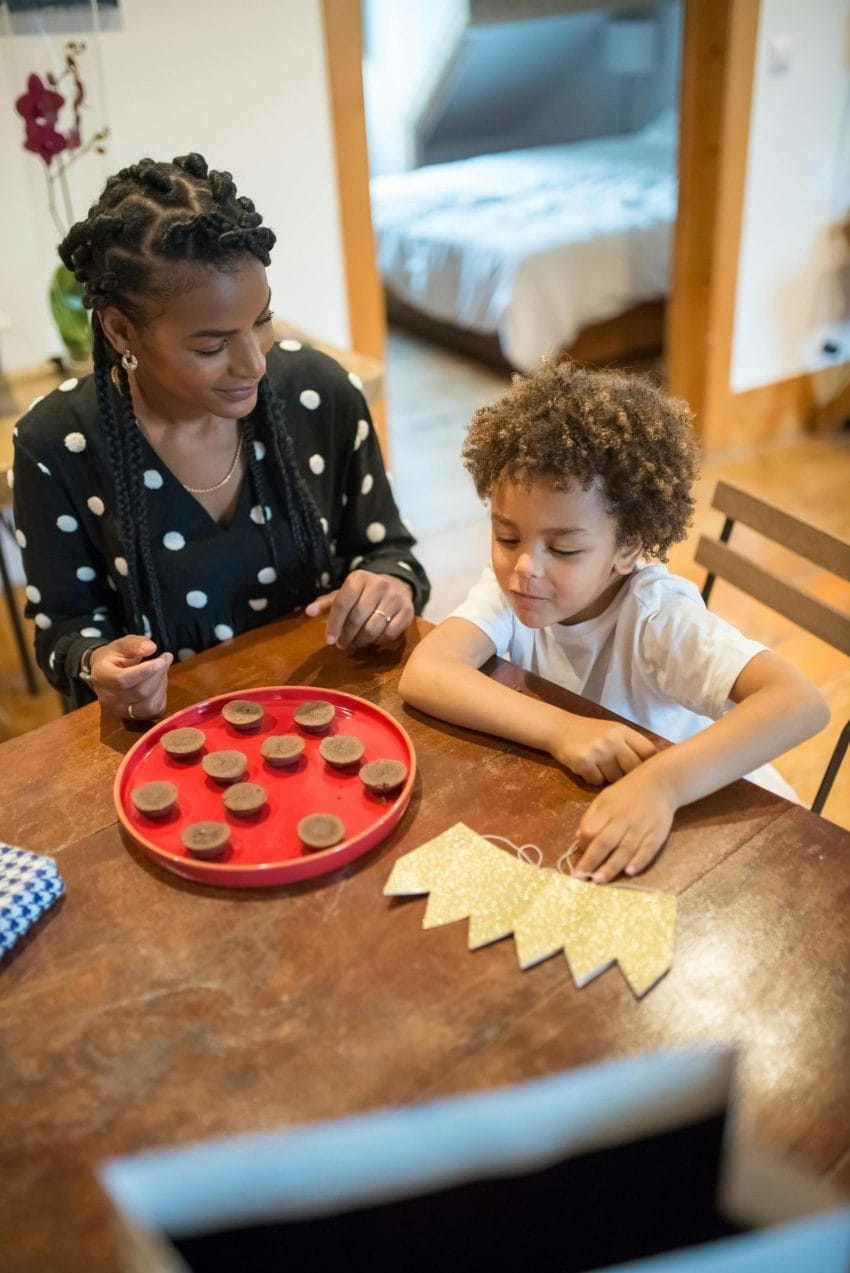Teaching Gratitude to Children for their Emotional and Social Growth
Gratitude is more than just saying “thank you.” It is a deeply ingrained mindset that can transform a child’s emotional growth and social development, building lifelong skills that enhance empathy, resilience, and strong relationships.
In an era dominated by materialism and instant gratification, teaching gratitude to children has never been more crucial. But how can we guide children toward genuine gratitude, especially in a world that often fosters entitlement rather than thankfulness?
Why Gratitude Matters in Child Development
Gratitude has a profound impact on a child’s psychological well-being. Research published by the Greater Good Science Center at UC Berkeley has shown that children who regularly practice gratitude are happier, more optimistic, and have better relationships with their peers. Furthermore, gratitude fosters emotional resilience, making children more capable of handling stress and challenges.
When children recognize the value of others’ kindness, they develop stronger interpersonal skills, fostering deeper connections with friends and family. This sense of gratitude becomes a foundation for their overall emotional intelligence and long-term success.
Key Insight: Teaching gratitude goes beyond courtesy; it strengthens a child’s emotional framework, helping them become more adaptable, socially aware, and emotionally secure.
Understanding the Core Desire and Challenges
Parents and educators alike yearn to raise children who are kind, empathetic, and resilient. However, the desire to instill gratitude often clashes with the realities of modern life. Children are growing up surrounded by digital distractions, advertisements, and societal pressures that emphasize individualism and material wealth.
The challenge lies in counteracting these influences with intentional practices that help children recognize the value of intangible gifts such as love, support, and kindness.
A New Approach to Teaching Gratitude
Conventional methods of teaching gratitude—such as making children say “thank you” when given something—are often surface-level and can feel forced. Children might learn the words, but not the deeper meaning behind them.
Instead, a more advanced, psychologically informed approach is needed—one that taps into their emotions, sense of purpose, and real-world experiences. Here are some advanced strategies that go beyond traditional methods.
1. Gratitude Journals with a Twist
Gratitude journals are a well-known tool, but how they are used can make all the difference. Instead of asking children to list generic things they are thankful for, encourage them to write about specific experiences where someone’s actions made a meaningful difference in their life. For example, rather than writing, “I’m thankful for my toys,” a child could reflect on how a friend shared a toy at school when they were feeling left out.
Additionally, pair the journaling with expressive arts, allowing children to draw, paint, or collage the moments they are grateful for. This engages their creativity and reinforces the emotional impact of those experiences.
Practical Tip: Set aside time each week for this activity as a family, where everyone shares their reflections. Modeling this behavior as a parent or teacher reinforces its importance in the child’s mind.
2. The Gratitude Circle
Incorporate a practice called the “Gratitude Circle” into your daily or weekly routine. This activity involves sitting together as a family or classroom and taking turns expressing appreciation for something specific someone else did.
The key to this practice is not just naming the act, but explaining why it was meaningful. For example, a child might say, “I’m thankful that my sister helped me with my homework because it made me feel supported when I was frustrated.”
This practice not only reinforces gratitude but also teaches children the importance of recognizing and articulating their emotions. It also builds their communication skills and empathy by encouraging them to acknowledge how others positively impact their lives.
Psychological Appeal: This method satisfies a child’s need for validation while simultaneously fostering deeper emotional bonds within the group.
3. The Gratitude Walk
Gratitude doesn’t always have to be a mental exercise—it can be physical too. Engage children in a “Gratitude Walk,” where they take a short walk through a park or neighborhood and point out things they are grateful for in their environment. This could be the beauty of nature, the presence of friendly neighbors, or the comfort of their home.
Tying gratitude to a physical activity helps children make a sensory connection to their surroundings. It transforms gratitude from an abstract concept into a tangible feeling linked to the world around them. It also serves as a stress reliever, combining mindfulness with gratitude, which is beneficial for emotional regulation.
Advanced Tip: Ask children to focus on how these things make them feel and why they are important in their lives, thereby deepening the emotional connection to their gratitude.
4. Gratitude Letters
One highly impactful practice is encouraging children to write gratitude letters to people who have made a difference in their lives. Unlike casual “thank you” notes, these letters should be thoughtful and specific, detailing what the person did and how it made them feel.
To increase the impact, have children read the letters out loud to the recipients. This not only strengthens the emotional connection between the child and the other person but also reinforces the child’s understanding of gratitude’s power to nurture relationships.
Key Insight: Expressing gratitude verbally or in writing helps children build confidence in acknowledging the positive actions of others. It also highlights gratitude as a practice of giving, not just receiving.
Connecting Gratitude to Social and Emotional Growth
Teaching gratitude extends far beyond emotional growth. Children who practice gratitude also develop critical social skills that can help them thrive in school, friendships, and later, the workplace.
Gratitude nurtures empathy—a child who appreciates the kindness of others is more likely to act with kindness themselves. This can create a positive feedback loop of social connection and reciprocity.
Moreover, grateful children often exhibit greater self-discipline. According to a study published in the Journal of School Psychology, students who engaged in gratitude activities showed improved academic performance and were less likely to engage in disruptive behaviors. They also demonstrated better self-control in delayed gratification tasks, which are critical for long-term success in life.
Overcoming Common Challenges
While the benefits of gratitude are clear, teaching it isn’t always easy. One of the most common challenges is overcoming children’s natural focus on themselves, especially during early development, when they are still learning to see the world from others’ perspectives.
To counter this, use empathy-building exercises where children practice imagining how others feel in certain situations. Role-playing games where children must take on the role of someone else can be a powerful way to build both empathy and gratitude.
Another challenge is dealing with a child’s reluctance to engage in gratitude practices. In these cases, gentle persistence is key. Start small, with brief gratitude discussions at the dinner table or during bedtime routines. Gradually build these into longer and more reflective practices as the child becomes more comfortable with the idea.
Making Gratitude a Part of Everyday Life
The ultimate goal of teaching gratitude is to weave it into the fabric of everyday life. It shouldn’t be a one-off activity, but rather a consistent practice that becomes second nature. Gratitude shouldn’t be reserved for special occasions or gifts; instead, children should be encouraged to find gratitude in the small, daily moments of life.
Practical Insight: Consider creating visual reminders around the home or classroom, such as a gratitude tree where children add leaves representing things they are grateful for throughout the year. This visual representation reinforces the habit and provides a regular opportunity for reflection.
Gratitude and the Bigger Picture
Gratitude is a practice that carries immense social and cultural relevance. In a society often characterized by self-interest and competition, teaching children to focus on what they are grateful for, and on how they can give back to others, creates a generation that is more empathetic, socially responsible, and emotionally resilient.
This has a ripple effect that extends far beyond individual well-being—grateful individuals contribute to stronger communities and a more compassionate society.
The Legacy of Gratitude
Teaching children gratitude is not a quick fix but a lifelong lesson that will serve them well into adulthood. As they grow, their gratitude will evolve from simple thankfulness into a deep appreciation for the people, experiences, and opportunities that shape their lives.
By fostering gratitude from a young age, we are giving children the tools to live more fulfilling, emotionally rich lives, equipped to face life’s challenges with resilience and grace.
Gratitude, when properly nurtured, becomes not just a practice but a way of life—a gift that keeps on giving.
Upgrade your personal and professional growth to new heights!
Our Advanced Personal Growth Course, offers proven strategies and actionable insights to fuel your success. Don’t wait to unlock your full potential. Join today and start your journey of growth and self-improvement!







